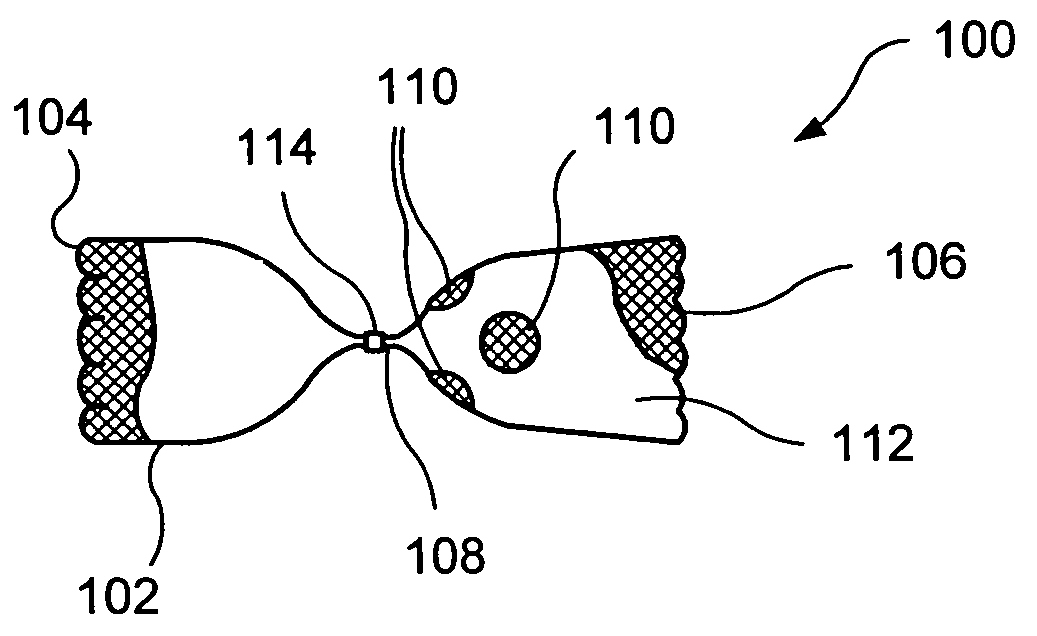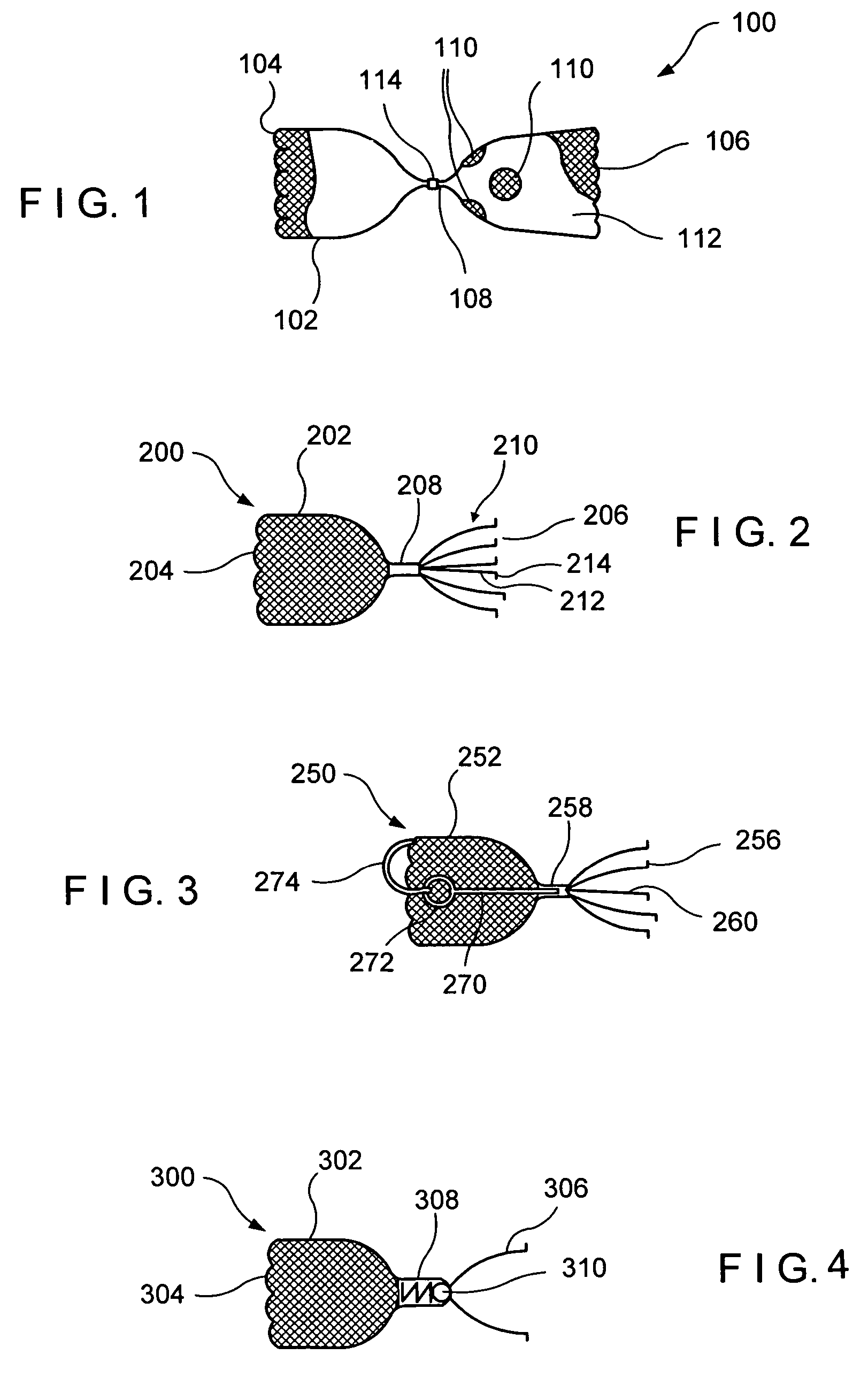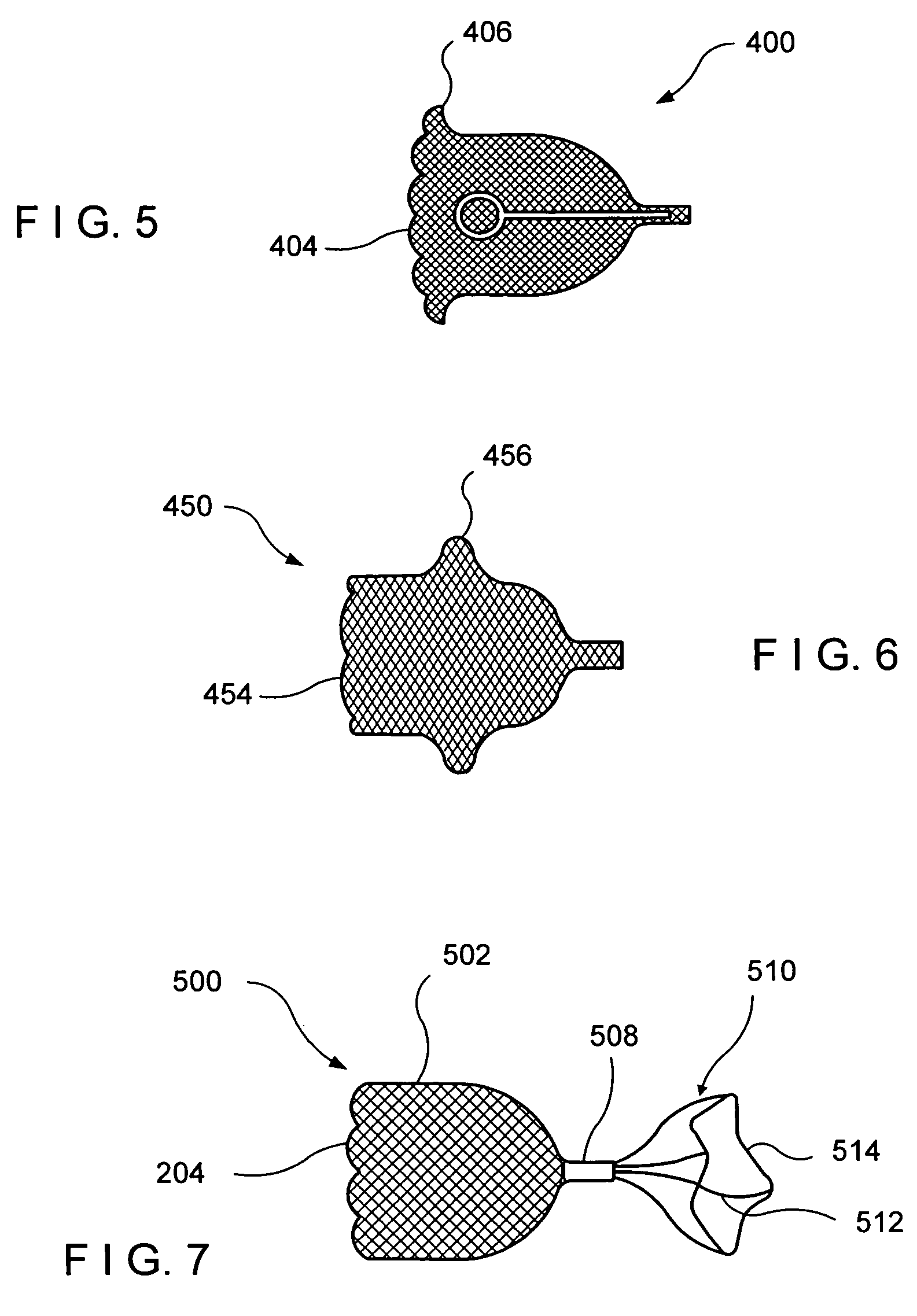Bronchoscopic lung volume reduction valve
a technology of lung volume and bronchial valve, which is applied in the direction of blood vessels, prostheses, drug compositions, etc., can solve the problems of emphysema patients' difficulty in breathing, damage to the walls of tiny air spaces, and obstructing airways, so as to achieve the effect of allowing mucus to flow
- Summary
- Abstract
- Description
- Claims
- Application Information
AI Technical Summary
Benefits of technology
Problems solved by technology
Method used
Image
Examples
Embodiment Construction
[0012]The present invention may be further understood with reference to the following description and the appended drawings, wherein like elements are referred to with the same reference numerals. The present invention is related to medical devices used to provide unidirectional flow within biological flow passages. More specifically, the invention is related to medical devices used to control the flow of air and of mucus within the bronchial passages of a lung.
[0013]The exemplary embodiments of the present invention described herein relate to a one way valve which can be used to control the flow of a gas through a biological flow passage. In one example, the one way valve is used during lung volume reduction procedures which are often performed to alleviate the symptoms of emphysema. The one way valve may be used to restrict the flow of air reaching selected portions of the lungs, and at the same time to permit the flow of residual air and / or mucus and other fluids out of the lung....
PUM
 Login to View More
Login to View More Abstract
Description
Claims
Application Information
 Login to View More
Login to View More - R&D
- Intellectual Property
- Life Sciences
- Materials
- Tech Scout
- Unparalleled Data Quality
- Higher Quality Content
- 60% Fewer Hallucinations
Browse by: Latest US Patents, China's latest patents, Technical Efficacy Thesaurus, Application Domain, Technology Topic, Popular Technical Reports.
© 2025 PatSnap. All rights reserved.Legal|Privacy policy|Modern Slavery Act Transparency Statement|Sitemap|About US| Contact US: help@patsnap.com



